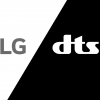Sales are up, prices are down: The latest figures paint a rosy future for both buyers and sellers of HDTVs.
The HDTV market is growing by leaps and bounds as prices for high-definition sets continue to tumble and programming options expand. That was the rosy industry outlook at opening sessions of the annual DisplaySearch HDTV Conference here.
In June, an NPD survey of major retailers found that 41 percent of all TVs sold in the United States were HDTVs, compared with 25 percent a year ago. {NPD, a research firm that tracks sales of technology products, owns DisplaySearch, a research company specializing in all aspects of the display industry.)
The NPD survey also found that HDTV sales accounted for 81 percent of all dollar revenues for TV sales in June, compared with 59 percent a year earlier. In the same time period, the survey found, the average cost of an HDTV set fell from $2223 to $1893, DisplaySearch president Ross Young said.
Prices Drop
Price declines varied somewhat depending on screen technology and size, but were impressive across the board. The biggest drops were for 37-inch LCDs, with average prices diving a full 50 percent over the last year, from $3409 in June 2005 to $1708 in June 2006.
A 50-inch plasma screen averaged $4951 last year and $3110 this year–a 37 percent drop. And price declines have slashed the once-huge difference between 40-inch LCDs and 42-inch plasmas: In June, 40-inch LCDs averaged $2321, while 42-inch LCDs averaged $2090.
Consumers are definitely interested, too: A DisplaySearch survey of people planning to buy a TV found that 63 percent wanted an HDTV-ready set, making that feature the second most-desired attribute in a new set after large screen size (68 percent).
Reasons to Buy
Young cited the coming cutoff of the analog broadcast system as a major incentive for people to upgrade their old sets. In February, President George W. Bush signed a law setting February 17, 2009, as the date when U.S. TV stations will have to stop their analog broadcasts. The law also provides funding for up to two $40 vouchers per household to help pay for digital-to-analog converters for anyone who wants to continue using an existing analog set to receive over-the-air digital programming (cable and satellite subscribers are not eligible).
You don’t need an HDTV to get digital broadcasts (which many stations are already transmitting). You need only a digital receiver–either in a digital set, in a set-top box, or in a digital-to-analog converter. Also, most new analog sets on sale today (and all new sets starting next March) are required by law to have digital tuners as well. But industry experts expect many consumers to replace their older analog sets with HD sets as the analog cutoff date approaches.
The requirement to add digital tuners to analog sets (which took effect a few years ago for large sets and is gradually expanding to smaller sets) has actually resulted in price increases for most CRTs. DisplaySearch found that the smaller the screen size, the more the price rose, so that a 25-inch CRT averaged $127 in February (when the digital-tuner requirement began to apply to 25-inch sets) and $156 in June. Higher analog CRT prices can’t hurt DTV and HDTV sales.
Content Gains
While prime-time network dramas and comedies are increasingly available in high definition, news and reality shows are slower to arrive at the party. However, progress is being made: CBS Engineering and Technology vice president Robert Seidel reminded the conference audience that David Letterman’s late-night show went high-def last fall–and said that starting in September, CBS affiliates will begin converting their news operations to HD. Seidel said the transition would take place over the following 18 months.
HD is beginning to make inroads in syndicated programming, as well: Seidel said that Jeopardy and Wheel of Fortune will be distributed in high-def to affiliates of the ABC, NBC, CBS, CW, and Fox networks.
Gamers are getting additional incentives to go HD in the form of HD-ready consoles. Sony in November plans to release two versions of the PlayStation 3, each with an integrated Blu-ray Disc player; Microsoft will have an Xbox 360 with an HD DVD player around the same time, DisplaySearch’s Young noted.
Why People Don’t Buy
With all this momentum, why wouldn’t someone buy an HDTV? Young had survey results for this question too. By far the top reason, cited by 40 percent of those people surveyed, was that they were not clear on HD’s benefits. A distant second reason (cited by 23 percent) was that while they wanted HD, it wasn’t a top priority. An equal percentage said HDTV was simply too expensive. Only 3 percent said they were disappointed by the HD picture quality.
Interestingly, at least one speaker, ESPN’s Bryan Burns, noted that people who own HDTVs aren’t necessarily experiencing HDTV. A recent study by the Cable & Telecommunications Association for Marketing noted that only 52 percent of survey respondents who owned HDTVs were receiving HDTV service from a cable or satellite provider. (The survey didn’t mention whether these HDTV owners were receiving any HD programs over the air.)
But TV makers clearly expect the HDTV naysayers to all but disappear by the end of the decade. DisplaySearch expects HDTV shipments from manufacturers in North America, which now account for 51 percent of all sets sent to resellers, to achieve 90 percent market share by 2010.





























